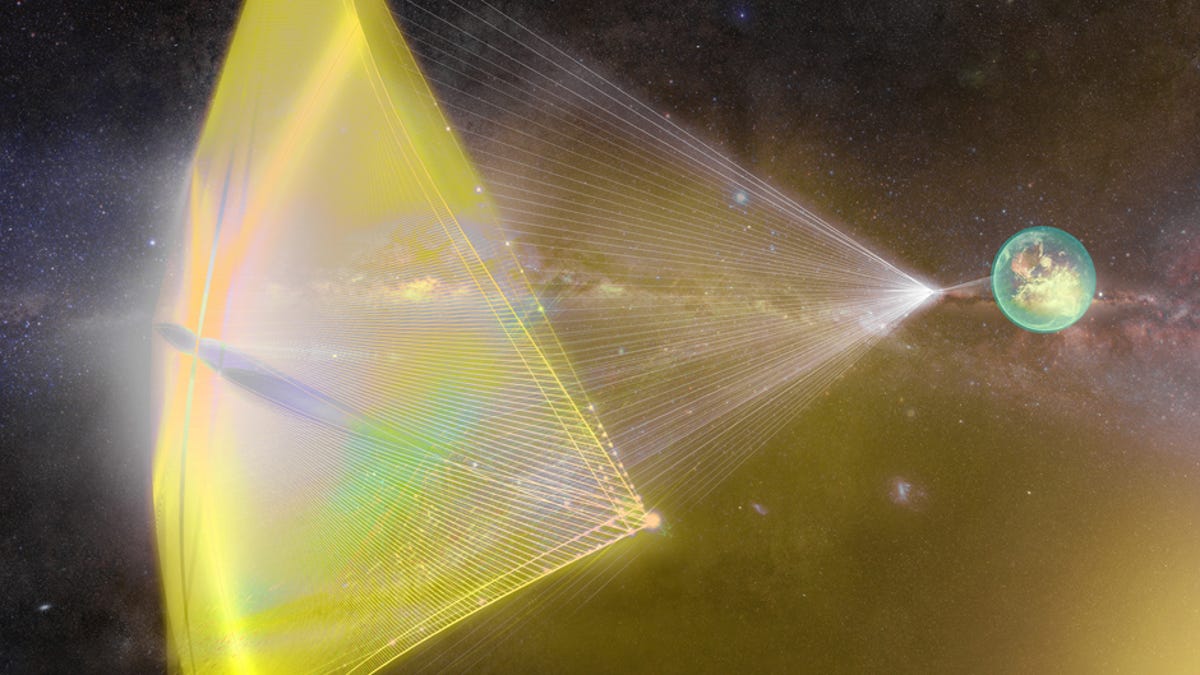Hawking, Zuckerberg have a plan to reach Alpha Centauri...like, soon
Billionaire investor Yuri Milner pledges $100 million to the effort to send a "nanocraft" to our closest neighboring star system.
Some of the richest and smartest people in the world are teaming up for a pretty awesome project: to literally go to the stars.
Investor Yuri Milner and cosmologist Stephen Hawking on Tuesday revealed their plan to send a butterfly-size spacecraft to our nearest neighboring star system, Alpha Centauri, within our lifetimes.
Milner pledged $100 million to the "Breakthrough Starshot" initiative to develop a system that could propel a tiny "nanocraft" to 20 percent of the speed of light, allowing for the possibility of traveling the 4 light years to reach Alpha Centauri within about 20 years of launch. Facebook CEO Mark Zuckerberg is a member of the Starshot board, alongside Milner and Hawking.
Last year, Milner and Hawking pledged a separate $100 million to search for E.T.
"Earth is a wonderful place, but it might not last forever," said Hawking in an email sent to reporters ahead of a press conference. "Sooner or later, we must look to the stars. Breakthrough Starshot is a very exciting first step on that journey."
Let's put the scale of this trip in perspective. Alpha Centauri is 25 trillion miles from Earth, a distance that would take 30,000 years to cover with today's fastest spacecraft. The Starshot initiative is proposing a system that would get there 1,000 times faster.
Milner said all the technology to get to Alpha Centauri either exists now or is on the horizon.
The program will be built around technology that uses light to propel a tiny spacecraft that can collect data and images and send them back to Earth. The "nanocraft," which can fit in the palm of your hand, will carry cameras, photon thrusters, a power supply, and navigation and communication equipment.
It will be propelled by an ultralight and thin Lightsail -- a larger version this tech was launched last year -- which will be "pushed" by an Earth-based light beaming structure that will need to be constructed.
Visualize shooting a small sail with a very powerful laser to send the spaceship attached to it hurtling through space, that's basically the idea. Starshot's leaders imagine developing ways to deploy a number of nanocrafts that can be propelled via the light beamer on Earth.
Hawking and Milner announce Starshot
Speaking at the Starshot press conference, legendary physicist Freeman Dyson took a contrarian view to the notion of reaching Alpha Centauri.
"The space between here and Alpha Centauri is not empty," said Freeman Dyson. "There are thousands of objects in between."
Avi Loeb, chairman of the Breakthrough Starshot Advisory Committee and theoretical physicist at Harvard University, said the project could completely shift how we view space exploration.
"(The nanocraft) will pass Pluto in just three days rather than over nine years," he told reporters.
Loeb said the launch of the light-propelled craft would only take two minutes, followed by two decades of travel to our neighboring star system. Then comes a planned hour-long fly-by of a potential planet orbiting Alpha Centauri, complete with image and data collection that will be sent back to Earth.
The research and development effort will be led by Pete Worden, the former director of NASA AMES Research Center.
"This is the first new approach to propulsion, really for a century since the liquid-propelled chemical rocket," Worden said.
He added that the light beamer used to propel nanocrafts can also be used as a telescope that is 1,000 times better than what we have now. He also had one more thing to say before yielding the microphone.
"I just gotta conclude by saying this is really cool."
Yes it is, Pete. Yes it is.


